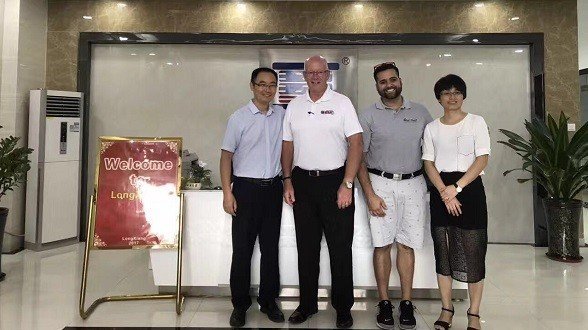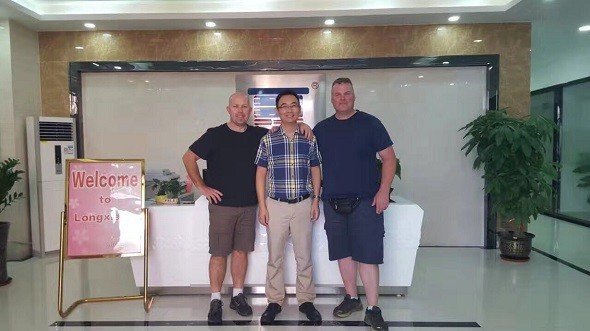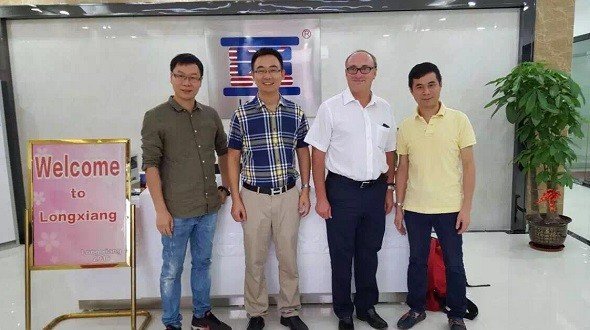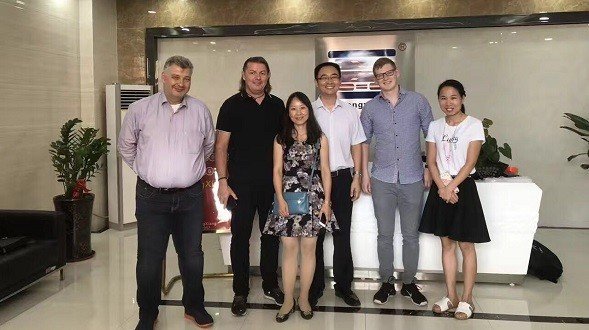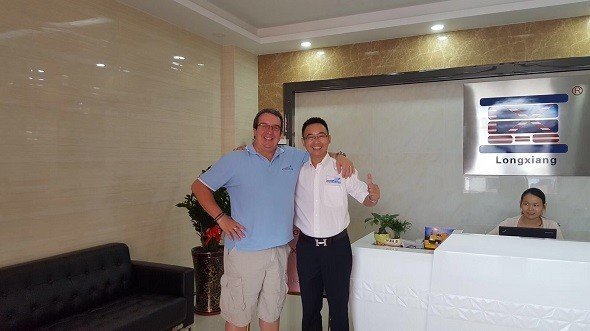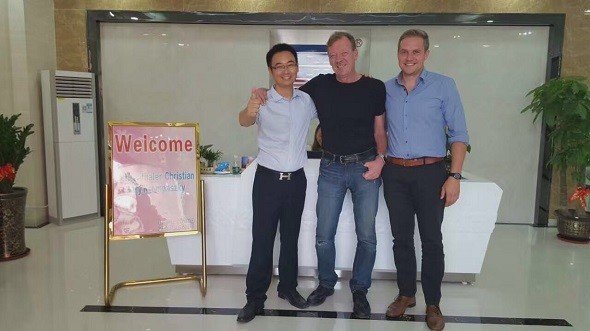If you’re reading this, chances are you’re evaluating a gas assisted injection molding manufacturer to produce parts that push the limits of design, weight, aesthetics, or complexity. At LXG Mold Tooling, we believe gas assist (often called gas assist injection molding or gas-mark injection molding) opens doors that conventional injection molding alone cannot.
Gas assist injection molding is a sophisticated variant of plastic injection molding in which a pressurized gas (typically nitrogen) is injected into the molten plastic to hollow out certain regions or push material outward, thereby shaping internal cavities, reinforcing ribs, or eliminating thick solid sections. This enables lighter, more efficient parts with better cosmetic surfaces, less warpage, and shorter cycle times.
The Core Process: How Gas Assist Injection Molding Works
Let me walk you through the steps, in straightforward language, so you know exactly what happens (and why it matters):
Partial Fill / Shot
First, molten plastic is injected into the mold cavity in a controlled “short-shot” or partially filled state. This creates the initial wall “skin” and defines peripheral surfaces.Gas Injection / Displacement
After that initial plastic fill, pressurized nitrogen gas is introduced into the cavity via specialized gas channels or pins. The gas pushes molten plastic outward to fill the design shape, leaving a hollow channel inside thicker sections or ribs. This displacement allows you to lighten walls while maintaining structural integrity.Packing & Gas Holding
Throughout cooling, a calibrated gas pressure is maintained to continue pushing material outward as shrinkage begins. The gas can act like a “support skeleton,” maintaining structural integrity while cooling.Venting / Gas Release
Once the plastic solidifies enough, the gas is vented, and the part is ejected. The hollow sections or cores remain to reduce weight, reduce sink marks, and improve dimensional accuracy.Optional Secondary Gas Phase (Compensation Gas)
In more advanced gas assist cycles, a secondary low-pressure gas injection can compensate for shrinkage areas, further refining final dimensions.
There are two principal types:
Internal gas assist (internal channels): The gas is injected inside the part (via pins or channels), especially for thick areas, ribs, or boss features.
External gas assist: The gas is introduced on the back side (non-aesthetic side) of a part, especially for panels or flat surfaces, pushing molten plastic to the visible side to improve aesthetics and reduce warpage.
You’ll hear “gas mark injection molding” in some circles; this refers to visible gas marks or ghost lines from gas penetration if not designed or vented well. As a skilled gas assisted injection molding manufacturer, we design tooling and process controls to suppress or eliminate gas marks — so your parts stay pristine.
Key Advantages You Get from LXG as Your Manufacturer
When you choose LXG Mold Tooling as your gas assist injection molding partner, you don’t just get a mold shop — you gain a full-stack solutions provider. Here’s what you gain:
1. Material Savings & Cost Efficiency
By hollowing out interior volumes, you reduce the amount of plastic used (we often achieve 20%–35% material savings depending on geometry).
That leads to lower raw material costs, lighter parts (which helps in shipping, etc.), and improved margins.
2. Reduced Cycle Time & Higher Throughput
Because thick sections cool slower, by hollowing them, you accelerate cooling. Many users report cycle time reductions of up to 30–50% compared to conventional molding.
That means more parts per hour, faster turnarounds, and lower cost per part.
3. Better Part Aesthetics & Surface Quality
Gas assist can eliminate sink marks, surface blemishes, and warpage. The gas pressure pushes the plastic flush against mold surfaces, improving cosmetic features.
4. Design Freedom & Complex Geometries
Parts that would otherwise be impossible or impractical can now be molded: deep ribs, integrated handles, hollow profiles, and aggressive cross-sections. You avoid joining multiple parts or designing around thick walls.
5. Lower Clamp Tonnes & Mold Stress
Because internal cavities lighten parts, you often need lower clamp forces, and stress on molds is reduced. That helps extend mold life and reduces tooling wear.
6. Dimensional Stability & Less Warpage
Constant gas pressure during cooling helps maintain structural integrity and reduces distortion, especially for large, uneven parts.
7. Eco-Friendly & Sustainable Benefits
Less material usage, lower energy per part (due to shorter cycles), and potential for less scrap all contribute to more sustainable manufacturing.
Choosing a Gas Assisted Injection Molding Manufacturer: What Matters
If you’re shopping around, here’s what you should demand. These are the things LXG Mold Tooling ensures for you:
Tooling Expertise & Gas Channel Design
The design and placement of gas channels, pins, vents, and overspill areas are critical. A bad design leads to gas marks, short shots, or weak parts.Gas Control Systems & Precision
Modern gas control units that allow precise timing, pressure profiling, multi-zone control, etc., are essential.Simulation & Moldflow / CAE Support
Before you commit to tooling, simulation helps identify gas paths, flow dynamics, and minimize risk.Material Compatibility
Not all materials respond equally. You’ll want an expert partner who understands thermoplastics like PP, ABS, PC, PBT, and glass-filled variants in gas assist.Quality Assurance & Inspection
FAI, CMM, SPC, optical inspection, and process validation ensure what you receive matches spec.Scalable Production & Experience with Volume
A manufacturer must handle not only prototype runs but also scale to thousands or millions with consistent quality.IP Protection & Communication
Tooling is expensive and proprietary. You want NDAs, strict access control, clear reporting, and trust.Post-Processing & Finishing Capabilities
Sometimes parts need painting, assembly, overmolding, or inserts. Having these services under one roof is a plus.
When choosing, you should feel confident that your manufacturer is not just a “molding machine operator” — but a partner who helps you optimize the design, tool it right, and manufacture reliably.
Use Cases & Applications
To help you envision where gas assist injection molding makes sense, here are examples (some from peers, some generic):
Automotive Components
Door handles, interior trims, dashboard frames, load-bearing plastic parts. Gas assist lets you reduce weight while maintaining strength and surface finish.Large Structural Covers & Panels
Appliances, printer covers, enclosures, instrument panels — broad surfaces with thick ribs.Handles, Levers, and Hollowed Parts
Lawn equipment handles, tool shells, sophisticated grips. The internal gas channel gives performance with lightness.Consumer Electronics
Items with both aesthetic surfaces and internal structure — combine hollowing, ribs, and sleek facades.Medical & Lab Equipment
Housings that need strong structure but low weight, with excellent cosmetic and dimensional tolerances.Industrial & Machinery Housings
Covers, enclosures, guard panels that benefit from strength, lightness, and dimensional stability.
Why LXG Mold Tooling is Your Ideal Choice
Let me explain why you should pick LXG Mold Tooling as your gas assisted injection molding manufacturer:
We bring 20+ years of mold design & injection molding experience and have been steadily scaling gas assist capabilities.
Our engineering team doesn’t just accept your design — we review, optimize, redesign gas channels, run simulations, and propose enhancements.
We invest in modern gas control systems, multi-zone profiling, and precise control to avoid defects, gas marks, and ensure consistency.
Our tooling facility builds robust molds, and we incorporate overflows, vents, and overspill strategies to manage gas properly.
We handle the full value chain: gas assist tooling, molding, post-processing, inspection, packaging — reducing hand-offs and potential errors.
We serve global clients, so we know how to comply with global standards, IP protection, logistics, and scaling.
When you place an order with us for gas assist injection molded parts, you’re not just buying parts — you’re buying confidence, repeatability, and engineering support.
Design Considerations & Best Practices
To make gas assist work well, your design must be gas-aware. Here are tips and guidelines (we’ll assist you too):
Determine regions suitable for hollowing (thick walls, ribs, bosses).
Ensure outer skin thickness is sufficient to handle cosmetic forces but not too thick to hamper hollowing.
Plan gas entry pins, channels, and overspill areas, placed in non-critical zones.
Use simulation tools (Moldflow, CAE) to validate gas paths and ensure complete filling.
Provide proper venting to prevent gas marks or burn.
Avoid sharp corners or abrupt thickness changes; transitions should be smooth.
Choose materials that respond well to gas assist (e.g. PP, PBT, ABS); highly filled materials may need adjustments.
Balance gas pressure, timing and sequence — too early or too much pressure causes defects.
Consider multi-zone gas control if the part geometry demands it.
Monitor and validate quality via cross-sectional inspection, droop tests, and CMM scans.
We at LXG Mold Tooling offer design review services to catch and correct these before tool build — saving you time and money.
Challenges & Mitigations (and How We Solve Them)
Gas assist is powerful — but it’s not plug-and-play. Common issues:
Gas Mark Defects / Ghost Lines: Improper venting or gas path design can show lines. We counter this by precision venting, channel placement, and pressure profiling.
Short Shots or Incomplete Fill: If gas displaces too early or channel design is off. We simulate and refine to prevent.
Material Compatibility Issues: Some materials resist hollowing; we guide material selection and blend design.
Overstress or Delamination: Poor control or gas surges can delaminate skin from core. Our gas pressure profiles manage that.
Tool Wear / Gas Erosion: Gas can erode mold surfaces over time — we use hardened materials, protective coatings, and maintenance schedules.
Complex Control Requirements: Multi-zone, multi-step gas cycles demand sophisticated controllers — which we have and maintain.
By partnering with LXG Mold Tooling, you get a manufacturer who anticipates and addresses these issues — not one who learns by trial and error.
How to Place an Order with LXG Mold Tooling (Your Roadmap)
Here’s what the ordering journey with us typically looks like (and what you can expect):
Inquiry & Concept Discussion
You send us your CAD models, drawings, specifications, tolerances, material preferences. We assess gas assist feasibility.Design Review & Feasibility Study
Our engineers perform a gas assist design review, simulate gas paths, suggest modifications, and propose optimal solutions.Quotation & Tooling Proposal
We provide a detailed quote — gas assist tooling cost, molding cost, material cost, projected cycle time, and expected yield.Tool Design & Prototype Build
We build prototype or test tooling (soft tool or hybrid) to validate the process. Includes gas path tooling, vents, etc.Trial Runs & Validation
We run sample parts, perform inspections, adjust gas timing/pressure curves, check for gas marks, dimensional accuracy.Pre-Production / Low-Volume Runs
A short production run to confirm consistency and quality before full-scale.Full-Scale Production
Once validated, we deliver full runs with inspection, quality control, packaging, shipping.Aftercare & Support
We support tool maintenance, modifications, life extension, and reorders.
As a customer, you’ll always have clarity on lead times, risk mitigation, and change management.
Sample Case (Hypothetical Client Story)
Let me paint you a scenario (to show how we talk to potential clients):
A client in the home appliances sector needs a large front panel cover with integrated ribs and thick bosses. Using conventional injection molding results in heavy parts, long cooling times, and sink marks. They approach LXG Mold Tooling:
We review the CAD and recommend internal gas assist channels to hollow the thick regions.
In simulation, we confirm that ~30% weight reduction is possible, with a cycle time drop of ~35%.
We design gas entry pins and overspill areas into strategic non-visible zones.
Prototype runs validate surface finish and that no gas marks appear on visible face.
The production mold is built accordingly, and final parts meet spec.
The client enjoys lower cost per unit, lighter parts, and a better aesthetic product.
This is exactly the kind of value we deliver to clients who order gas-assisted molded parts from LXG.
3 Steps For Precision Manufacturing
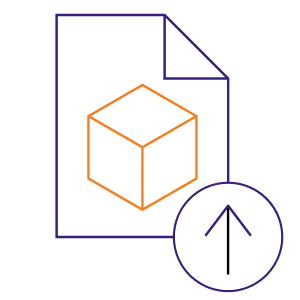
Share Your Files
We’ll sign an MNDA and assess manufacturability for free.

Recieve A Quote
Clear pricing and lead times, no
surprises.

Place Your Order
Lock in production and move forward with confidence.
Get A Quote Now and let’s build smarter, faster, and stronger — together.
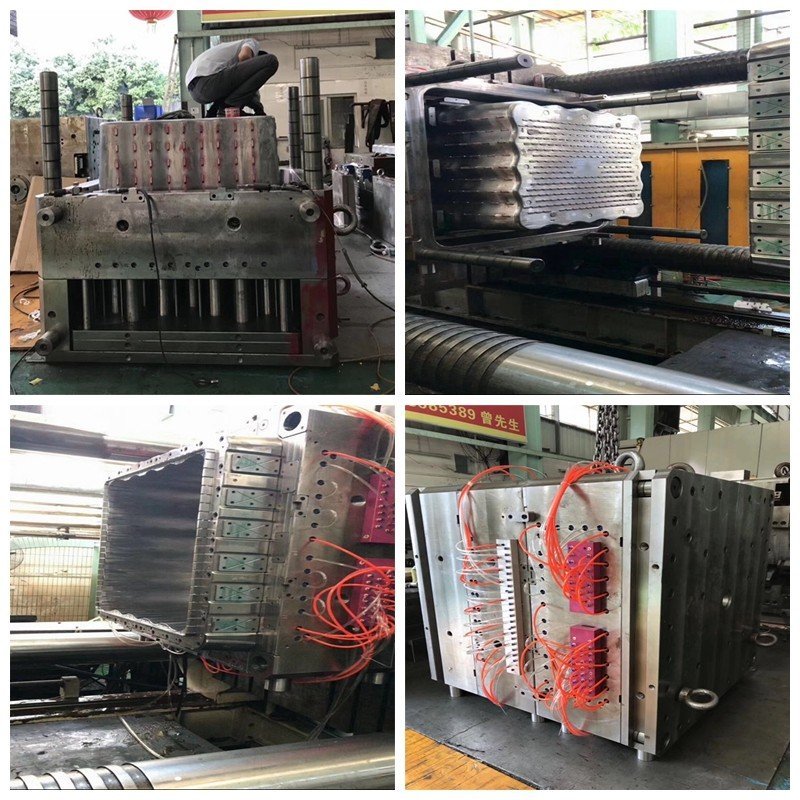
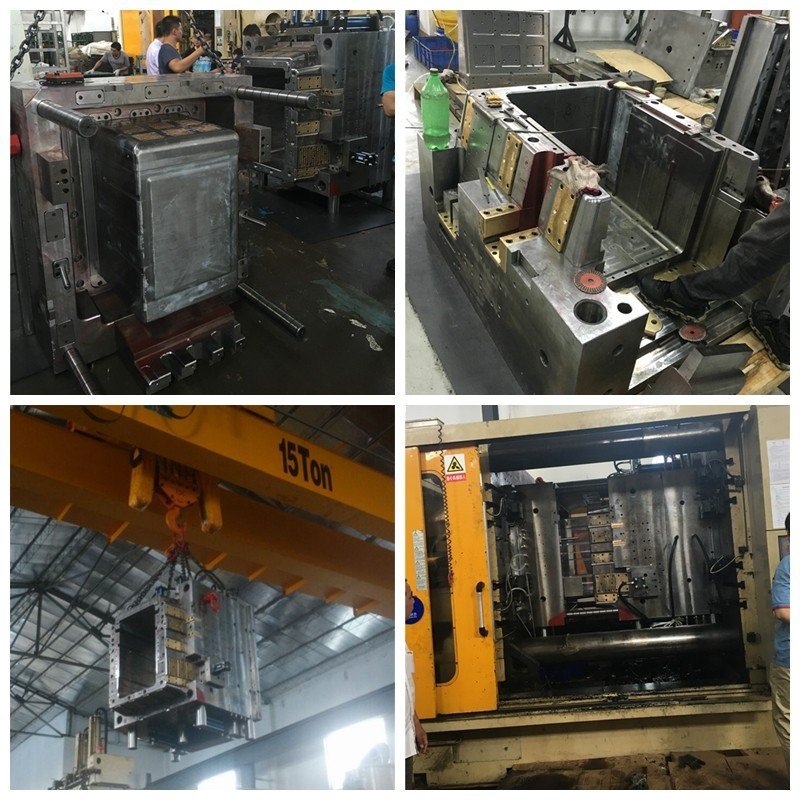
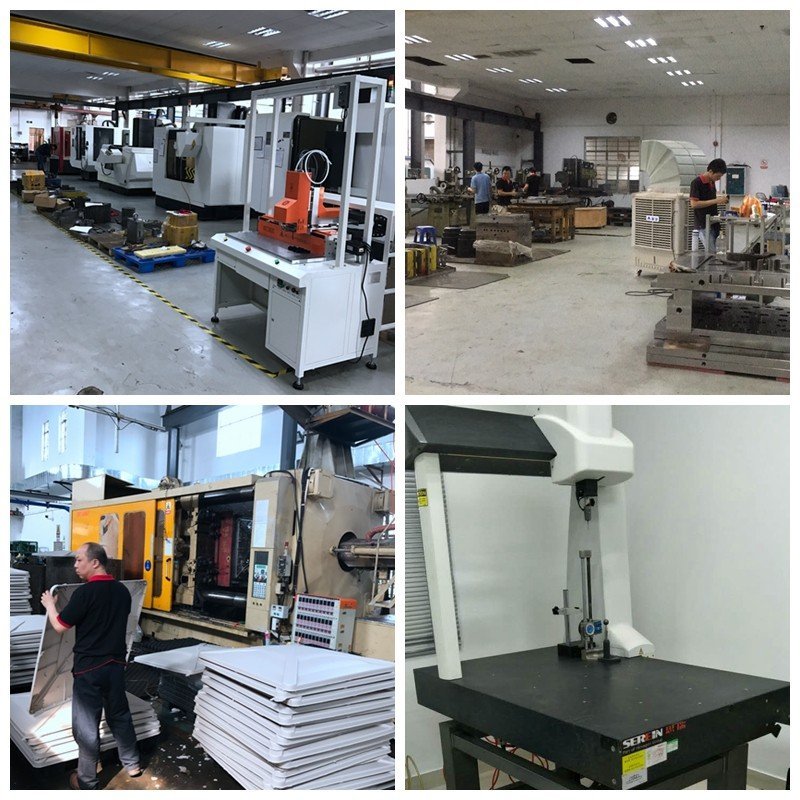
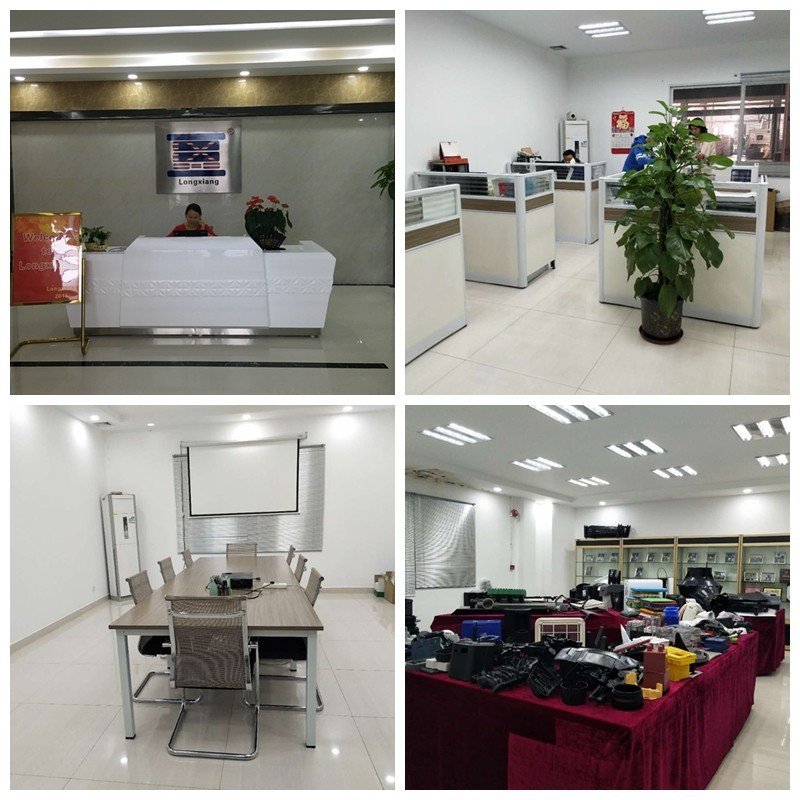
Our Testimonials
our client say's
At LXG Mold Tooling, we believe great products start with great tools. As a global leader in injection mold tooling and high-precision plastic manufacturing, we’ve built our reputation on quality, speed, and trust.
Founded in 2000 as part of LongXiang-Ltd, our company has grown into one of China’s most reputable mold-making and injection molding partners. With a 5,000 sq. meter facility, 120+ skilled professionals, and state-of-the-art equipment, we provide end-to-end solutions — from concept validation and rapid tooling injection molding prototypes to mass production with durable injection molding tools.
